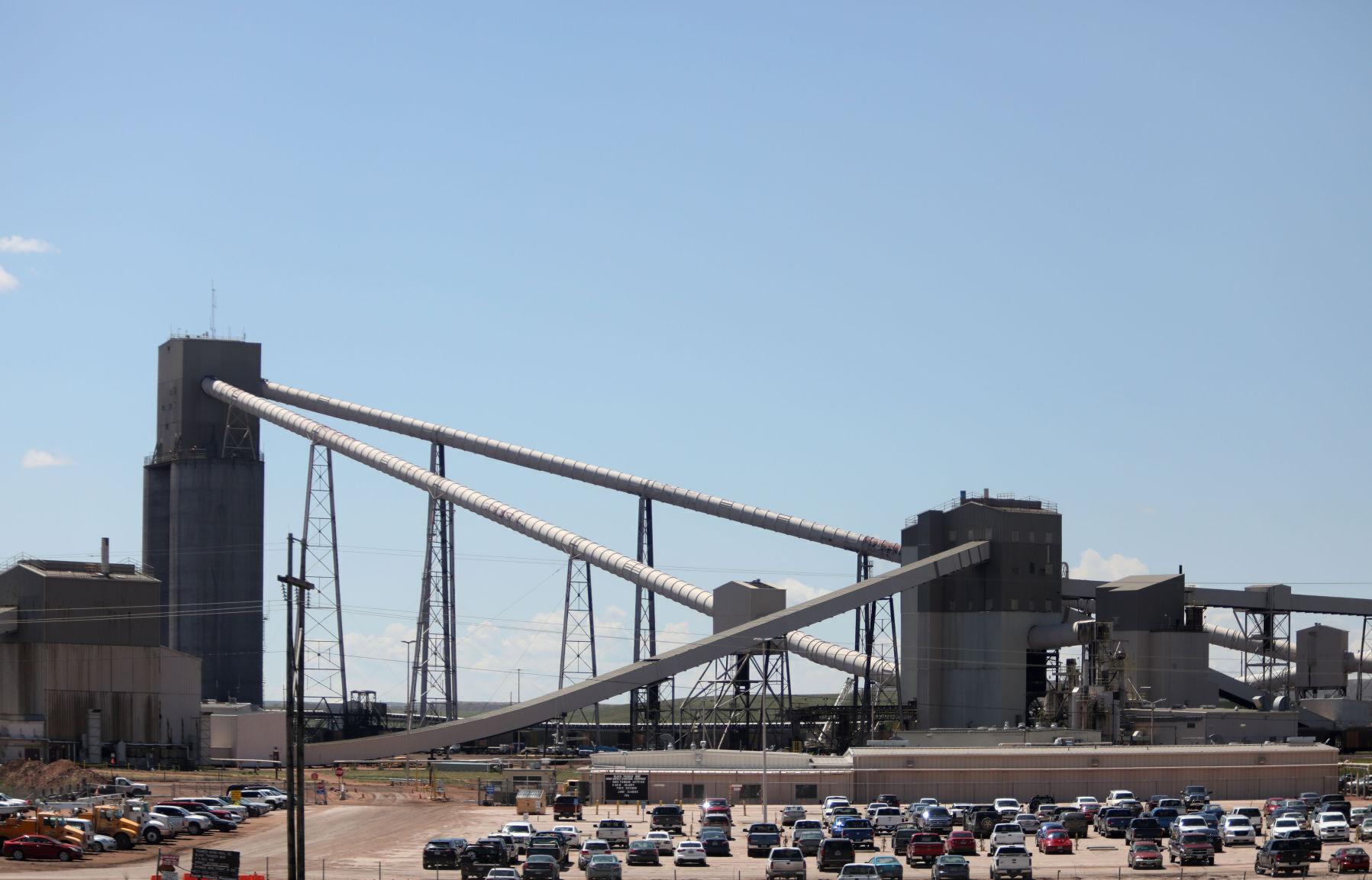Arch, Peabody Pursue Royalty Reductions Despite Strong Q2 Performance

By Nicole Pollack
July 30, 2021 - The companies that own the two biggest U.S. coal mines have both sought royalty reductions at some Wyoming mines, despite outperforming economic projections in the second quarter of 2021.
Peabody Energy, the world’s largest private coal company and owner of North Antelope Rochelle Mine, posted revenue of $723.4 million for the second quarter. Arch Resources, whose subsidiary Black Thunder Coal Company operates Black Thunder Mine, posted $450.4 million in revenue. Both mines operate in the Powder River Basin.

Employees' vehicles fill the parking lot in 2019 at Arch Coal's Black Thunder mine near Wright. The mine's owner has sought a royalty reduction even as its economic performance improved.
Photo: Cayla Nimmo, Star-Tribune
Though Peabody announced a net loss of $28.6 million this quarter, compared with Arch’s net gain of $27.9 million, the companies’ numbers reflect the coal sector’s recovery, said Rob Godby, an associate professor of economics at the University of Wyoming.
“You might think it’s bad news that they’ve posted a loss, but the loss is far lower than what a lot of analysts expected,” Godby said.
The disparity between the companies’ Q2 results reflects their differing strategies. Peabody, an international coal conglomerate whose operations are reliant on global demand, focuses most of its operations on thermal coal — the type that is mined in the Powder River Basin and burned to produce electricity. But Arch has pivoted in recent years from thermal coal to the metallurgical coal mined in the eastern U.S., which is used in steel production.
“They see thermal coal as not a long term, viable strategy. And so they’ve been pretty clear that they’re trying to exit that market where they can,” Godby said.
Arch continued to look for ways to reduce its thermal holdings during the first half of 2021, CEO Paul Lang told stakeholders during Tuesday’s earnings call. And Peabody’s executives, during a call with stakeholders on Thursday, focused primarily on the stronger international market and more lucrative exports from their Australian mines.
Though U.S. demand for thermal coal has been falling for more than a decade, the industry rebounded quickly from its downturn last year. Arch sold 31% more thermal coal in the second quarter of 2021 compared with 2020. Peabody’s Powder River Basin sales were up almost 26% over last year, generating 20% more revenue. That rapid recovery has been fueled in part by skyrocketing natural gas prices.
Utilities can choose whether to generate electricity using coal or natural gas, and Powder River Basin coal becomes competitive when gas prices surpass about $2.75 per million British thermal units, said Travis Deti, executive director of the Wyoming Mining Association. Natural gas prices are currently above $4, indicating that demand for thermal coal is likely to remain high through the rest of 2021 — and potentially longer — as natural gas production slowly returns to pre-pandemic levels.
This year’s Q2 results also reflect a significant improvement over the second quarter of 2020, when Arch saw a net loss of $49.3 million, and Peabody’s losses exceeded $1.5 billion.
Both companies applied for federal royalty reductions last year, citing COVID-related challenges. Peabody’s applications were rejected; Arch retracted its own before a decision could be made. The companies then submitted new requests for royalty relief without mention of the pandemic.
Hundreds of Wyoming oil and gas operators were granted royalty relief by the Bureau of Land Management in response to the pandemic. But coal companies had a harder time demonstrating that their economic troubles were caused by COVID-19, said Shannon Anderson, staff attorney at the Powder River Basin Resource Council.
“There’s certain criteria that companies can use to apply for royalty relief, and in broad strokes, that criteria requires an economic showing by the company that the royalty relief is needed to continue to produce the resource,” Anderson said.
The Wyoming Mining Association advocated for the reductions to help keep coal mines operating through the pandemic, Deti said.
“We pushed pretty hard for royalty relief, and a number of companies applied. And we’re glad at least a couple of companies are getting that relief,” he said.
Gov. Mark Gordon also favored temporarily reducing royalties for coal companies in an effort to preserve jobs during the pandemic, even amid the state’s budget crisis.
Anderson, however, questioned Arch’s need for federal support given the company’s strong Q2 showings.
“Did they really need this royalty relief to produce the coal, and not only produce the coal, but to produce the coal at a profit?” she asked.
Godby emphasized the trade-off officials face when considering lowering royalties. “We have to remember that about 50% of those mineral royalties come back to the state. So the federal government splits the revenue with the state where it occurs. And supporting that, [Gordon] was also supporting a revenue reduction. And many people pointed out that we were kind of between a rock and a hard place in that sort of choice,” he said.
Peabody’s updated relief applications are still pending. But in May, before second quarter results were posted, the BLM granted a royalty reduction to Arch’s Coal Creek Mine — one of the Powder River Basin’s smallest coal mines — that slashes its royalty rate from 12.5% to 2%. The change applies retroactively, with an effective date of Sept. 1, 2020, and continues through Sept. 1, 2022.
Arch announced in February that it plans to close Coal Creek Mine in 2022, and is already slowing production. Those factors made Coal Creek more likely to receive a royalty reduction than larger, more competitive mines, Godby said. Coal Creek alone is too small for its royalty cut to have a substantial impact on Wyoming’s coal revenue.
But Nicole Ghio, fossil fuels program manager at environmental advocacy organization Friends of the Earth, called the royalty reduction “another taxpayer-backed subsidy” that exacerbates climate change while undermining state and local governments.
And some conservation groups, including the Powder River Basin Resource Council, are concerned about what the Coal Creek decision could mean for Peabody’s pending requests — and the state’s bottom line. Last year, Wyoming received $126.7 million in federal mineral royalties, according to the mining association.
“If granted, those royalty relief applications would mean a very significant reduction in the federal royalties paid on coal in the Powder River Basin. And that matters not only for the federal budget, but also for us here in Wyoming, because we receive half of those royalties,” Anderson said.

